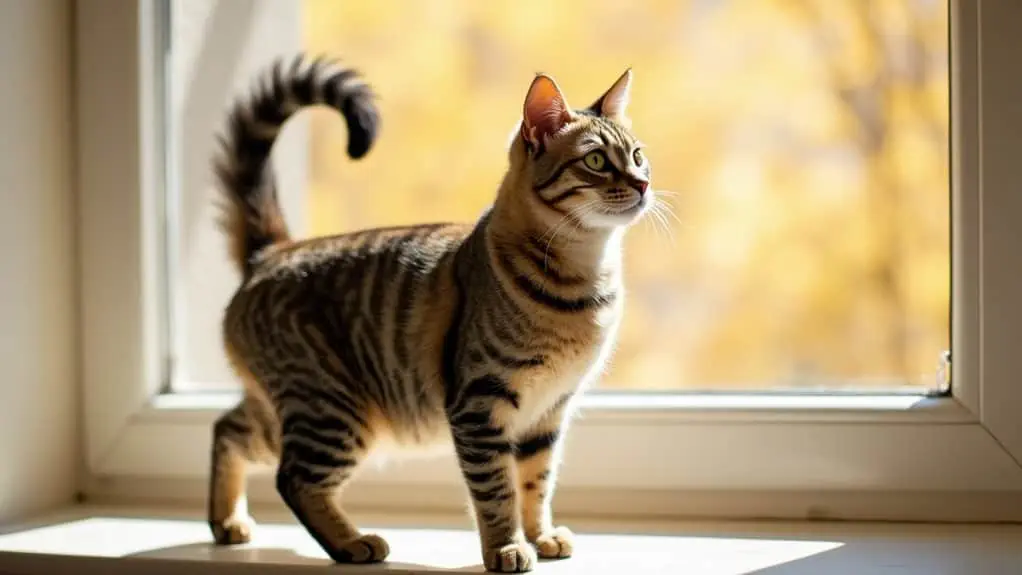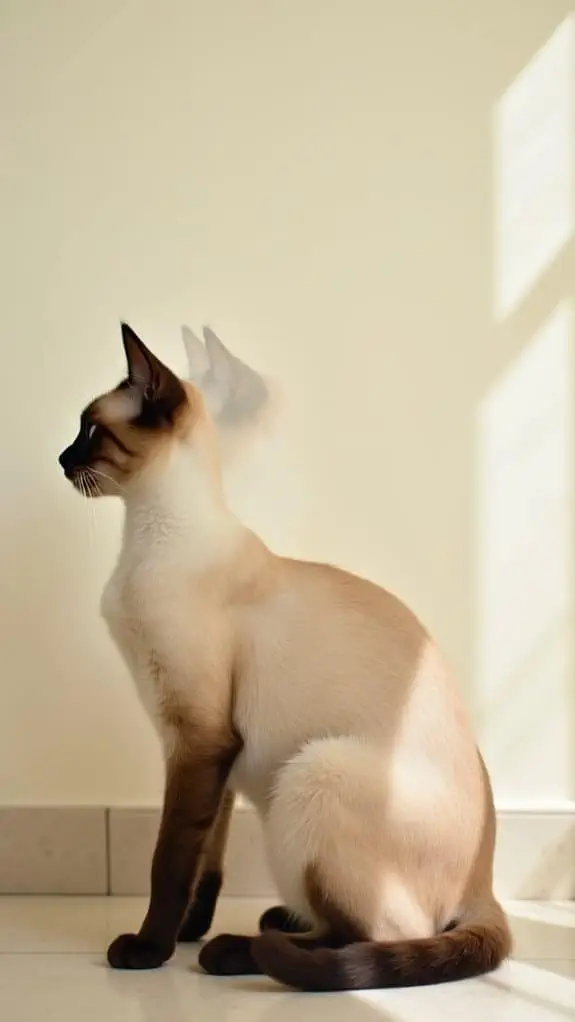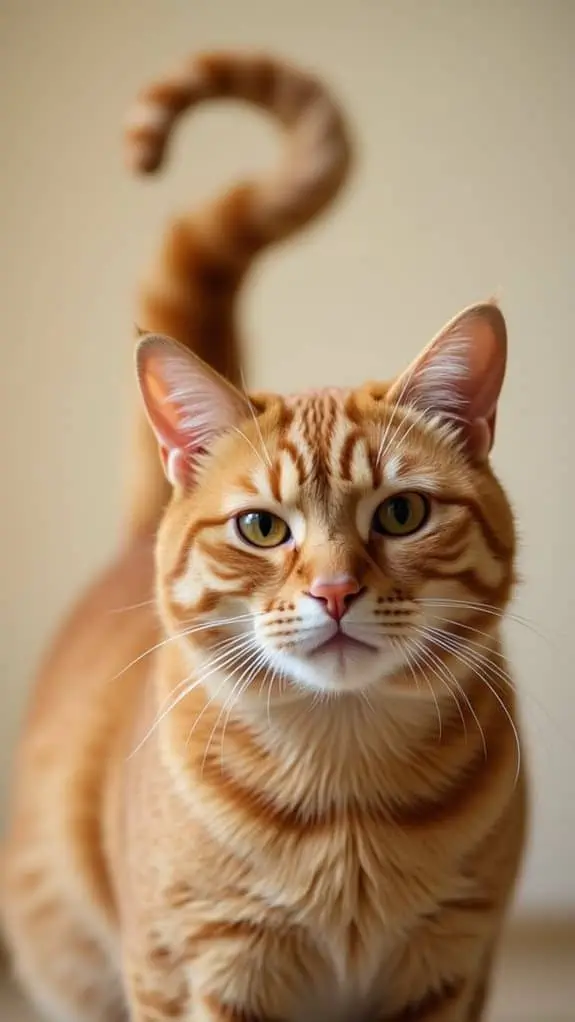The Best Fluffy Pancakes recipe you will fall in love with. Full of tips and tricks to help you make the best pancakes.

You've probably noticed your cat's tail dancing through the air like a furry conductor's baton, but have you ever wondered what those movements really mean? Your feline friend's tail is actually a sophisticated communication tool, sending clear signals about their mood and intentions. From the proud flag-pole position to the nervous low curl, each position tells a unique story about how they're feeling. Let's decode these silent messages together and reveal the secrets your cat's been trying to share with you all along.
The Secret Messages Behind Your Cat's Tail Positions

A cat's tail is like a mood ring, constantly broadcasting their emotional state to those who know how to read the signs. Understanding your cat's tail communication can help you better serve their needs and strengthen your bond.
When you notice your feline friend's tail standing straight up, they're feeling friendly and confident, welcoming your attention. A charming U-shaped curve suggests they're in a playful mood and ready for interaction. When a cat's tail appears fluidly swishing, it means they're feeling relaxed and content. Importantly, a relaxed body posture signals comfort and adds to the interpretation of the tail position. If your cat wraps their tail around you, take it as a loving compliment – they're showing deep trust and affection. A rapidly moving tail with sharp movements indicates your cat is experiencing intense irritation.
However, when you spot a tucked or low tail, your cat might be feeling scared or anxious, signaling that they need space and reassurance. By observing these subtle signals in feline behavior, you'll become fluent in your cat's emotional language.
Understanding Tail Movements and Their Meanings
While your cat's tail position reveals their general mood, the specific movements they make tell an even more detailed story about their emotional state. By learning to interpret these patterns of tail communication, you'll become more attuned to your feline friend's needs and feelings.
Watch for quick thrashing or whipping motions, which signal that your cat's feeling annoyed or threatened, while gentle swaying often means they're focused on something interesting. If you notice your cat's tail quivering, they're likely excited or happy – unless they're backing up to a wall, which might mean they're about to mark their territory! A question mark shaped tail is a particularly welcoming sight, as this indicates your cat is feeling friendly and open to interaction. A tail held high often means your cat is approaching with affection and wants to greet you warmly. Additionally, recognizing the significance of tail puffing can provide insight into your cat's emotional response to potential threats or stressors.
Understanding these nuances of feline behavior helps you better serve your cat's emotional needs and create a stronger bond between you.
How Your Cat's Tail Reveals Their Mood

Your cat's tail serves as a remarkable emotional barometer, broadcasting their feelings and intentions through subtle positions and movements. As you observe your feline friend's tail communication, you'll notice that a high, upright tail usually means they're happy to see you, while a low or tucked tail suggests they're feeling fearful or anxious. Cats rely on their tail muscles and nerves to create these precise movements that communicate their emotions.
Certain breeds like Persian cats naturally carry their tails in a lower position, so it's important to understand your specific cat's normal tail carriage.
Watch for those emotional indicators that reveal your cat's changing moods. When their tail curves like a question mark, they're inviting you to play, but rapid flicks or thrashing movements signal that they need space.
You'll know your cat's delighted when their tail quivers while standing tall, but if it puffs up suddenly, they're likely startled or afraid. Understanding these signals helps you better serve your cat's emotional needs and strengthen your bond.
Building Trust Through Tail Language Recognition
When you observe your cat's tail communication patterns, you'll notice how they use different positions to express their feelings and readiness to interact. A straight-up tail with a slight curve means they're happy to see you, while a gentle wrap around your leg signals deep trust and affection. Understanding these signals helps you identify if your cat is experiencing stress or anxiety. Cats will clearly show you when they're ready through their body language signals. Engaging in behaviors like hair-licking can also indicate their affection and strengthen your bond. To strengthen trust development, respond appropriately to these signals. When your cat displays friendly tail positions, offer gentle praise and occasional treats.
However, be mindful of warning signs – a twitching or lashing tail means it's time to give them space. By consistently respecting their tail language and responding with care, you'll create a stronger, more understanding bond with your cat.
Common Tail Signals Every Cat Owner Should Know

A cat's tail serves as a dynamic emotional barometer, revealing their innermost feelings and intentions through subtle movements and positions. Understanding tail communication is vital for building stronger bonds with your feline friend and responding appropriately to their needs.
When observing your cat's tail behavior, pay attention to these key signals:
- A straight-up tail with a slight curve indicates confidence and friendliness, welcoming your interaction. When your cat feels completely safe and content, they may also display their belly exposed while relaxing, which is a sign of trust and relaxation in familiar environments.
- Slow swishing or twitching can mean excitement during playtime, but watch for flattened ears that signal irritation. When your cat is focused on prey or toys, you may notice gentle tail swishing as they prepare to pounce, a behavior that often indicates heightened stalking instincts.
- A tucked or low-held tail suggests your cat's feeling anxious or uncertain, signaling they need space and comfort, often indicating a need for defensive postures to feel secure in challenging situations.
Final Thoughts
Your cat's tail is like their personal emoji keyboard, sending you messages about their feelings throughout the day. Once you've mastered their unique tail language, you'll reveal a deeper connection with your feline friend. Whether they're giving you a high-five with a straight-up tail or sending an SOS with a tucked position, you're now equipped to decode these signals and respond with the understanding they deserve.








